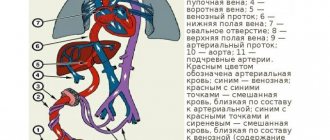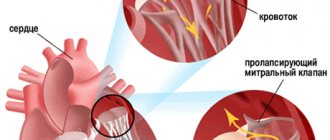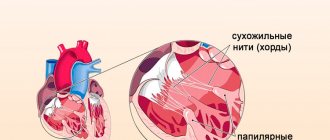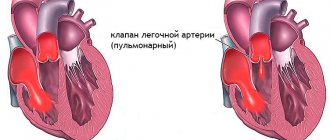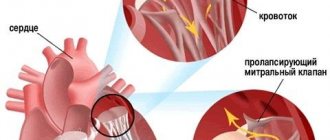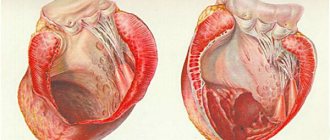General information
Coronary artery bypass grafting is a surgical intervention during which a bypass route for blood supply to a certain area of the myocardium is created. Bypass surgery allows you to completely restore nutrition to the myocardium when the coronary artery is narrowed. The own veins of the leg or the radial artery are used as a shunt. Surgery can reduce the severity of coronary heart disease and improve the patient’s quality of life.
What is cardiac bypass surgery after a heart attack?
to stop the spread of myocardial infarction when it develops by performing cardiac bypass surgery within 6-15 hours after the cardiovascular event. Technically, the intervention is carried out in a standard manner, taking into account some features:
- execution as early as possible;
- aortocoronary connection recommended;
- access through the sternum on an idle heart and artificial circulation.
How to remove a scar?
The symptoms of heart scars directly depend on the disease that caused them. Within 5-10 years, fibrous replacement can occur without specific symptoms, as long as the heart manages to compensate for the volume of connective tissue and maintain contractility. Then the complaints appear:
- for chest pain;
- for shortness of breath;
- for complete or partial intolerance to physical activity;
- swelling of the face and limbs;
- for rapid fatigue.
The tips of the fingers and toes acquire a characteristic bluish tint, which signals heart failure. Treatment at this stage is aimed at protecting the heart from further damage; surgery or special medications (except cardioprotectors) are not required.
If a heart attack occurs as a result of ischemia or atherosclerosis, extensive fibrosis develops after necrosis, affecting the posterior wall, coronary vessels, often even the aortic valves. In this case, urgent drug treatment is started, which includes:
- beta blockers;
- acetylsalicylic acid;
- diuretics;
- metabolites (ATP and others);
- nitrates.
It is strictly prohibited to select medications on your own after a heart attack; you should contact your cardiologist for detailed prescriptions. Treatment should be continued until the relative normalization of well-being, not forgetting that cardiosclerosis increases the likelihood of a recurrent heart attack by 50-75%.
Fact! The scar after a heart attack continues to increase in area for 2-4 months, all this time it is necessary to maintain dynamic monitoring of the patient. Surgery may be required if the condition suddenly worsens.
Other recommendations from cardiologists regarding the treatment of fibrotic changes:
- do not overload the heart, avoid active sports and physical activity;
- remain calm, avoid emotional stress;
- support the heart muscle with a special diet.
After a heart attack, it is useful to undergo treatment in specialized cardiac centers rather than at home, this helps reduce the damage resulting from impaired blood supply to the heart muscle.
Interesting! If scars on the heart affect more than a quarter of the total volume of the organ, this is an indication for surgery.
Classification
Surgeons use various compounds depending on the location of the affected vessels and their number:
- coronary artery bypass grafting - connection to the aorta;
- mammacoronary bypass surgery - connection to the thoracic artery.
The difference between shunts is that they receive power from different vessels: from the internal mammary artery and the aorta.
Coronary artery bypass graft
A vessel is isolated from an arm or leg and connected to the aorta. The second end is sutured below the area of the narrowed coronary artery. This makes it possible to provide nutrition to the affected area of the myocardium directly from the aorta, which has a positive effect on metabolic processes in the myocardium and ensures its normal functioning. The patient's tolerance to physical activity improves and the severity of pain decreases.
Mammarocoronary bypass
A mammary coronary bypass connects the mammary (thoracic) arteries and the coronary vessels of the heart damaged by atherosclerosis. The anatomy of the location of the vessels makes it possible to connect the left internal thoracic artery with the left coronary artery, and the right one with the right coronary or interventricular artery.
Bimammary bypass surgery
It is performed for widespread damage to the coronary vessels. Surgical intervention is recommended if previously performed CABG is ineffective, with vein thrombosis (impossibility of using them), narrowing and blockage of the shunt, and narrowing of the radial arteries. Advantages of this method:
- wall strength;
- resistance to the formation of cholesterol plaques and blood clots;
- wide lumen of the thoracic artery.
Minimally invasive coronary artery bypass grafting
Access to the coronary arteries is obtained through a small incision in the intercostal space to the left of the sternum. The chest is not opened. Healing occurs much faster, and the operation is considered less traumatic. The surgical intervention is performed without connection to a heart-lung machine, on a beating heart. Minimally invasive surgery is performed when 1 or 2 coronary branches on the anterior wall of the left ventricle are damaged. A significant drawback of this method is the inability to ensure complete restoration of coronary blood flow.
Coronary stenting of heart vessels
It is considered a gentle, minimally invasive, intravascular operation on the vessels of the heart, which consists of widening a narrowed artery by straightening the inserted stent. Stenting is usually carried out immediately after coronary angiography , which makes it possible to determine the extent of damage to the coronary artery and select the stent required in diameter and length.
Diet
Making healthy food choices helps the healing process.
Recovering from heart surgery requires focusing on a healthy diet. This will help the body heal, reduce the risk of complications and enable the patient to recover faster. Many studies have shown that a diet rich in fruits, vegetables, nuts and seeds can reduce the risk of heart disease.
Appetite may decrease noticeably, and food may lose its usual taste. The patient may also experience a strange metallic taste in the mouth. This is usually caused by surgery or related to medications. Full recovery may take 3 months. It is recommended to eat small portions frequently.
A healthy diet provides the body with many nutrients - such as vitamins, minerals, antioxidants and dietary fiber.
The diet should include:
- Meat and/or meat alternatives such as eggs, tofu, legumes and nuts;
- Fish – 2 buttery fish meals per week, such as salmon, mackerel or sardines, will help you get plenty of healthy omega-3 fatty acids;
- Wholemeal bread or crackers, brown rice, wholemeal pasta, quinoa, barley, rye, couscous;
- Dairy products - preferably low fat;
- Healthy fats – small amounts of healthy fats and oils from nuts, seeds, avocados and fatty fish;
- Water – Avoid sugary soft drinks and alcohol.
The goal is to consume 2 meals of fruit, 5 meals of vegetables, and 4 or more meals of whole grains - depending on your energy needs.
More tips to help you eat well:
- Reduce salt intake - use as little salt as possible when cooking as this will help lower blood pressure and help prevent fluid retention;
- Avoid sugary foods - they are often eaten as a substitute for healthy foods and can contribute to weight gain.
If your appetite does not return within a few weeks, you should tell your doctor.
Emotional condition
It is common for patients to feel sad or depressed after heart surgery, but these feelings should subside after the first few weeks.
To improve your mood:
- Walk daily;
- Devote time to hobbies and social activities;
- Talk openly about your feelings to loved ones;
- Sleep well.
Sex after surgery
In the first two weeks after heart surgery, most people are at high risk of heart problems during sex as a result of increased heart rate and blood pressure. However, this risk becomes significantly less by six weeks after surgery.
While recovering from heart surgery, you may experience intermittent chest pain, abnormal heart rhythms (arrhythmias), or heart failure, which increase your risk of heart problems during sex. People in these risk groups need additional assessment/or treatment before attempting sex.
The doctor will assess the patient's condition and advise when it is safe to resume intimate relationships.
Sexual problems
The patient may experience decreased sexual activity and desire. Various factors may contribute, including medication side effects, depression, and concerns about triggering another heart attack or death. You should not worry about decreased sexual interest; after the body is fully restored, your previous sex life will return.
Physical exercise
Since it takes 6-8 weeks for the breast bone to heal after heart surgery, you should slowly return to your normal activities.
When can you resume daily activities:
- Driving. Do not drive for 4-6 weeks unless advised by your doctor as concentration, reflex time and vision are often affected within 6 weeks.
- Sex. Sex requires about the same amount of energy as walking up two flights of stairs, as a rule, the patient is ready to return to this from about the 3rd week (loss of interest in sexual activity for a while is normal, however, the patient should return to normal life in 3 months).
- Job. The patient can return to work as soon as concentration, confidence and physical ability allow. Typically, returning to an office job (or any other job without physical and psychological stress) is possible after 3 months, to a job involving hard work - after six months.
- Housework. You should start with the things that the patient likes to do most and which are easy for him: cooking, caring for flowers, cleaning, scrubbing, washing. Heavier work is not recommended.
Causes
CABG improves coronary blood flow, which reduces the severity of pain and reduces the number of angina attacks. After surgery, patients can better tolerate physical activity, improve performance, and improve their psychological state. Surgeries to reconstruct the cardiac vasculature reduce the risk of myocardial infarction .
Indications for shunt installation:
- critical narrowing of the coronary arteries;
- angina pectoris grade 3 and 4 (attacks occur during normal physical activity and at rest);
- aneurysm due to coronary sclerosis ;
- inability to perform stenting;
- narrowing of the coronary arteries in combination with post-infarction aneurysm and structural defects of the heart .
Rehabilitation in the intensive care unit
After coronary artery bypass surgery, the patient is in the intensive care unit. Since the effect of anesthetics is prolonged, the patient still needs support for respiratory function for some time even after he comes to his senses. For this, the patient is connected to special equipment.
In the first days after surgery, it is important to prevent the consequences of the patient’s uncontrolled movements in order to prevent the sutures from coming apart or the catheters and drains attached to the body from being pulled out. The patient is fixed to the bed using special fastenings. In addition, electrodes are attached to the patient to monitor heart rate and rhythm.
On the first postoperative day, medical personnel perform the following actions with the patient:
- Takes a blood test.
- Conducts x-ray examination.
- Performs an electrocardiogram.
- Removes the breathing tube. The drains in the patient's chest and the gastric tube remain.
Note! It is extremely important at the first stage that the patient is warm. For this, the person is wrapped in a warm blanket. To avoid congestion in the legs, special underwear (stockings) is used.
On the first day, the patient is exclusively in a supine position. He is given antibiotics, painkillers and sedatives. There may be a slight increase in body temperature for several days. This reaction is normal and is a response to surgery. Another common postoperative symptom is profuse sweating.
Important! Prolonged stay of the patient in a supine position can lead not only to congestion in the legs, but also to pneumonia due to the accumulation of fluid in the lungs.
The level of physical activity is increased gradually, based on the health status of the individual patient. Initially, walking within the ward is allowed. Over time, physical loads increase, the patient begins to walk along the corridor.
Sutures from the lower limb are removed a week after surgery, and from the chest - right before discharge. The wound heals within 3 months.
to the point ↑
Symptoms
After surgery, patients are admitted to the intensive care unit, where urinary tract catheterization and artificial ventilation are performed. Painkillers are administered and antibiotics . Heart function is assessed on a monitor in the form of electrocardiography. After stabilization of the patient’s condition, the patient is transferred to independent feeding and breathing. The range of movements increases gradually, step by step.
At first, patients are bothered by chest pain, which is due to the specifics of the operation being performed, because it is open to the public. As the sternum grows together, the pain subsides. Also, discomfort is observed in the area where the vein was taken. All symptoms are temporary and the patient gradually returns to his usual lifestyle.
Carrying out the operation
When open heart surgery is performed, the following steps are performed sequentially:
- The patient is placed on the operating table.
- He is given general anesthesia.
- When the anesthesia begins to take effect and the patient falls asleep, the doctor opens the chest. To do this, he makes an incision in the appropriate area (usually it is no more than 25 centimeters in length).
- The doctor cuts the sternum, partially or completely. This allows access to the heart and aorta.
- Once access is secured, the patient's heart is stopped and connected to a heart-lung machine. This allows the surgeon to calmly perform all manipulations. Today, technologies are used that in some cases make it possible to perform this operation without stopping the heartbeat, while the number of complications is lower. than with traditional intervention.
- The doctor creates a shunt to bypass the damaged section of the artery.
- The cut part of the chest is secured with a special material, most often a special wire, but in some cases plates are used. These plates are often used for elderly people or for people who have undergone frequent surgical operations.
- After the surgery is performed, the incision is sutured.
Tests and diagnostics
Complete information about the state of the vascular system of the heart is obtained after coronary angiography and multislice computed tomography. Both research methods make it possible to assess the degree of damage to the coronary vessels and determine further treatment tactics.
MRI of the heart and coronary vessels
Magnetic resonance imaging is considered a non-invasive diagnostic test, which is based on the nuclear magnetic resonance method. MSCT allows you to obtain a clear image of the heart and assess the condition of the coronary vessels. Absolute contraindications:
- the presence of clamps, staples and metal implants;
- the presence of an insulin pump, pacemaker, ferramagnetic implant and other electronic systems.
The price of the study ranges from 15 to 35 thousand rubles. Compared to the magnetic resonance imaging method, cardiac CT is more informative in terms of assessing the condition of the vascular system of the heart.
Additional examination methods:
- coagulogram;
- biochemical and general blood test;
- Ultrasound of the abdominal organs;
- lipid spectrum;
- chest x-ray;
- Ultrasound scanning of the lower extremities;
- ECG;
- EchoCG;
- Analysis of urine.
Treatment
Drug therapy is aimed at:
- maintaining normal blood pressure and pulse levels;
- prevention of thrombosis;
- lowering cholesterol , leveling the lipid spectrum;
- improvement of trophism and nutrition of the heart muscle.
Medicines
The main drugs prescribed after stenting and bypass surgery:
- Brilinta;
- Plavix;
- Bisoprolol;
- Lisinopril;
- ThromboASS;
- Atorvastatin;
- Preducted.
Prevention and rehabilitation after heart surgery
Surgical intervention does not eliminate the true cause of the disease - atherosclerotic changes in blood vessels, but only eliminates the consequences. For prevention, a change in diet and lifestyle is recommended. The rehabilitation period is somewhat different after bypass surgery and after stenting of the coronary vessels.
Coronary artery bypass surgery, basic recommendations for the prevention of complications after surgery and for a speedy recovery in the postoperative period:
- complete cessation of smoking and consumption of alcohol-containing products;
- dietary food with a reduced content of animal fats;
- maintaining normal blood pressure numbers;
- gradual increase in physical activity;
- wearing special compression hosiery (tights, stockings);
- control over heart rate;
- preventive drug therapy;
- daily walks in the fresh air;
- regular monitoring by your doctor.
Basic recommendations that must be followed immediately after CABG surgery:
- daily walking for at least 20 minutes with a gradual increase in duration to 1 hour;
- take time for breathing exercises, meditation and complete relaxation of the body;
- gradual loss of excess weight due to nutritional correction and moderate physical activity;
- replace meat products (lamb, pork, duck) with fish;
- completely eliminate offal, butter meat and fried foods;
- reduce salt intake;
- replace baked goods and sweets with honey and dried fruits;
- fight excess weight.
After heart bypass surgery, do gymnastics yourself at home, avoiding excessive overload and lifting weights. Light exercises after CABG help keep the back muscles in good shape.
After stenting the heart vessels, there are slightly fewer restrictions, due to the fact that the chest is not opened, which allows patients from the first days to gradually increase physical activity and train the heart muscle, without allowing it to relax and become lazy. Bypass surgery involves a longer recovery period.
What kind of rehabilitation is needed in the first days after surgery?
After transferring a patient from the intensive care unit to a regular ward, the main focus of recovery is normalizing breathing and preventing congestion in the lungs.
For this purpose, an exercise such as inflating a rubber toy (ball, ball) is recommended.
A vibration massage is performed over the lung area with light tapping movements. You need to change your position in bed as often as possible, and after the surgeon’s permission, lie on your side.
It is important to gradually increase physical activity. To do this, depending on how they feel, patients are advised to sit on a chair, then walk around the room or corridor. Shortly before discharge, all patients should climb stairs independently and walk in the fresh air.
Diet after bypass surgery
The main factor that negatively affects the condition of the vascular wall and blood supply to the myocardium is excessive cholesterol in the blood. This is why it is so important to give up animal fats and diversify your diet with foods that remove cholesterol from the body and prevent its deposition on the walls of blood vessels.
The diet should contain sufficient quantities of vegetables, herbs, fish dishes, and chicken without fat. It is better to choose dairy products with a reduced fat content. It is recommended to consume vegetable oil as a source of fat - 2 tablespoons per day.
Consequences and complications
Complications can develop if the patient has concomitant pathology:
- diabetes;
- pathology of the renal system;
- diseases of the pulmonary system.
Most often, after surgery, bleeding occurs in the anastomotic area and rhythm disturbances are recorded. Possible complications:
- acute circulatory disorder in the brain and myocardium;
- thrombosis of the venous bed;
- renal failure;
- local complications in the form of wound infection and the formation of postoperative keloid scars;
- closure or narrowing of the shunt.
Reminder for patients undergoing open heart surgery
The primary recovery period lasts approximately 30-45 days. During this time, the patient gradually returns to normal activities. The pace and characteristics of the recovery period are individual for each person. Each patient should increase the load at their own pace. During the recovery process there may be periods of improvement and deterioration, which are expected and should not cause alarm to the patient.
In most cases, the patient is discharged after the sutures are removed. Daily care of seams is to wash them with soap and water (using a soft washcloth is allowed). If there is discharge from a postoperative wound, after washing it should be covered with a sterile gauze cloth and sealed with an adhesive plaster on top. In case of changes in the wound such as redness, heavy discharge or increased body temperature, you should consult your doctor. It is possible that sensations of loss of sensitivity, itching and pain at the operation site will occur over time.
Prediction of how long you can live after surgery
If blood flow in the coronary arteries is completely restored after coronary bypass surgery and the patient takes all prescribed therapy, then the prognosis is considered favorable.
Restoring adequate blood supply to the myocardium can relieve the patient from pain associated with myocardial ischemia, reduce the number of angina attacks, and improve exercise tolerance.
Long-term results of surgical intervention:
- restoration of working capacity;
- reducing the risk of developing myocardial infarction;
- reducing the risk of sudden death from acute coronary syndrome;
- improving exercise tolerance;
- increase in life expectancy;
- medications are taken only for prophylactic purposes.
How long do you live after heart bypass surgery?
The average lifespan of a shunt is 10 years. To assess the viability of the shunt, coronary angiography is performed, based on the results of which a decision is made on the need for repeated surgical treatment. A full course of rehabilitation after cardiac surgery allows you to maximize the service life of the installed shunt.
Reviews from patients who have undergone bypass surgery are mostly positive. After the operation, the heart undergoes remodeling; during this period, patients note a deterioration in their health, and it seems to them that the operation was unsuccessful. However, after a while, after a complete restructuring of the blood supply to the myocardium, the patients’ well-being significantly improves, exercise tolerance increases, and chest pain goes away. In the long term, reviews are mostly positive.
A gentle surgical option to restore adequate blood supply to the myocardium is cardiac stenting. The essence of the operation is to insert a special stent into the coronary vessel, which, after deployment, completely opens the lumen of the affected artery and restores blood flow. The rehabilitation period after stenting surgery is much shorter than with bypass surgery, because The intervention is not performed on an open heart, but a stent is inserted through the groin or through the arm.
Rest and sleep
The postoperative period after heart surgery may be accompanied by problems with sleep, but after 3 months the sleep pattern should return.
If pain bothers you, you will need to take medications about half an hour before bedtime. You also need to arrange a comfortable bed, perhaps listening to relaxing music before bed will help the patient.
In the evening, it is recommended to avoid caffeine, including chocolate, coffee and tea.
Call your doctor if your sleep begins to affect your mood or behavior.
